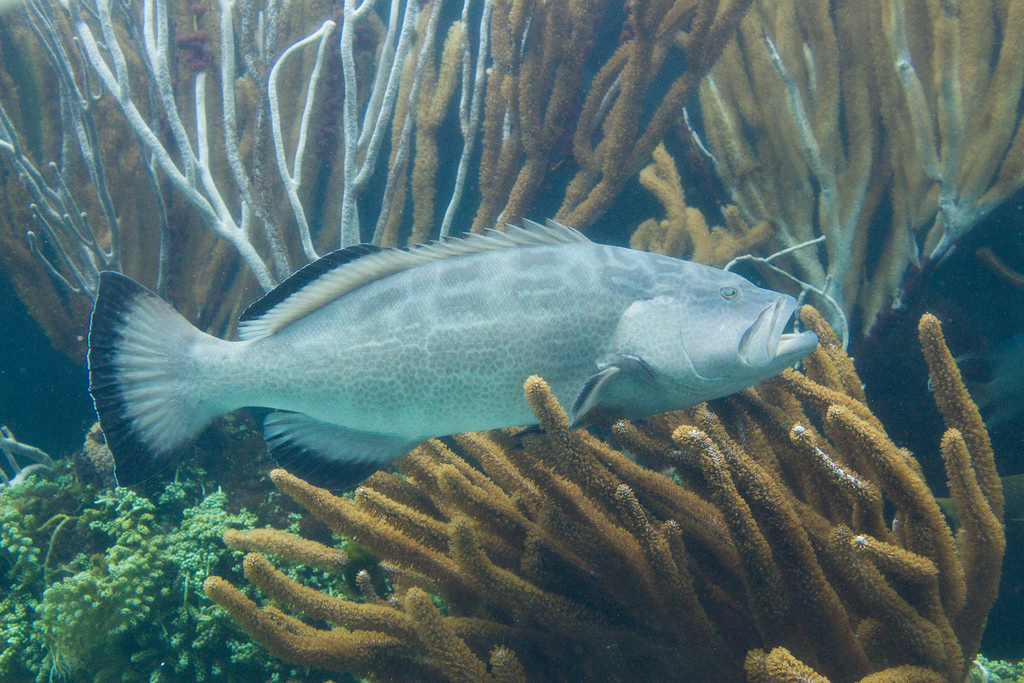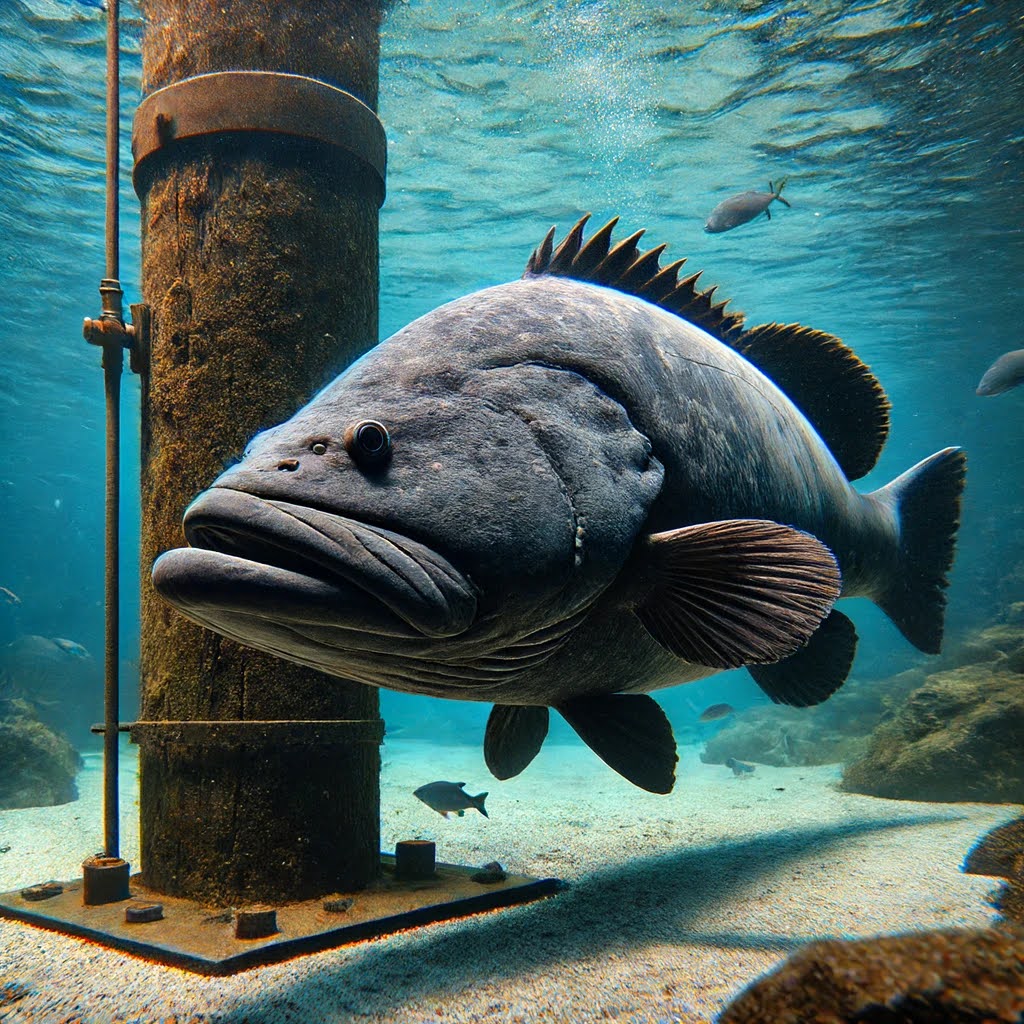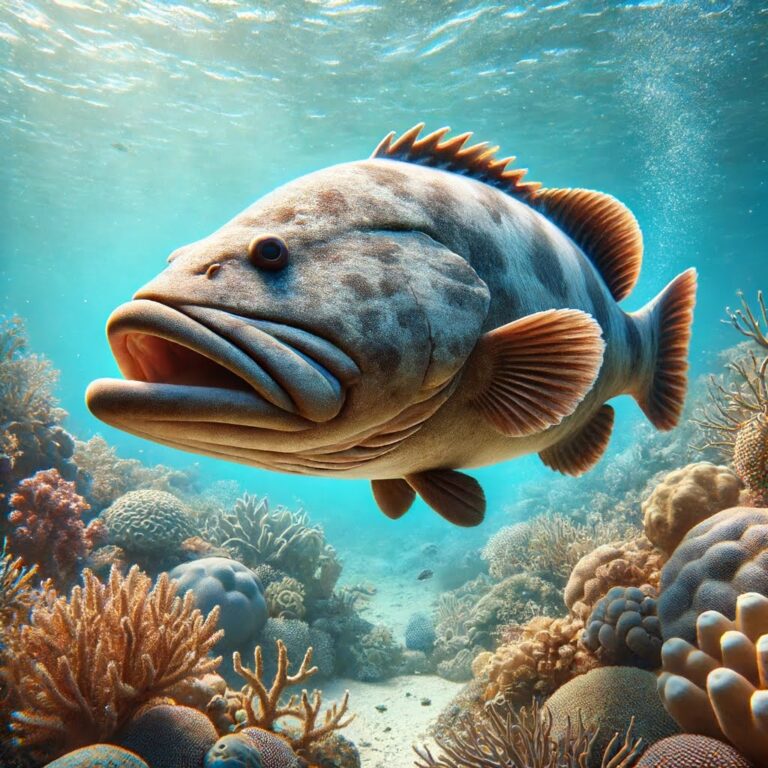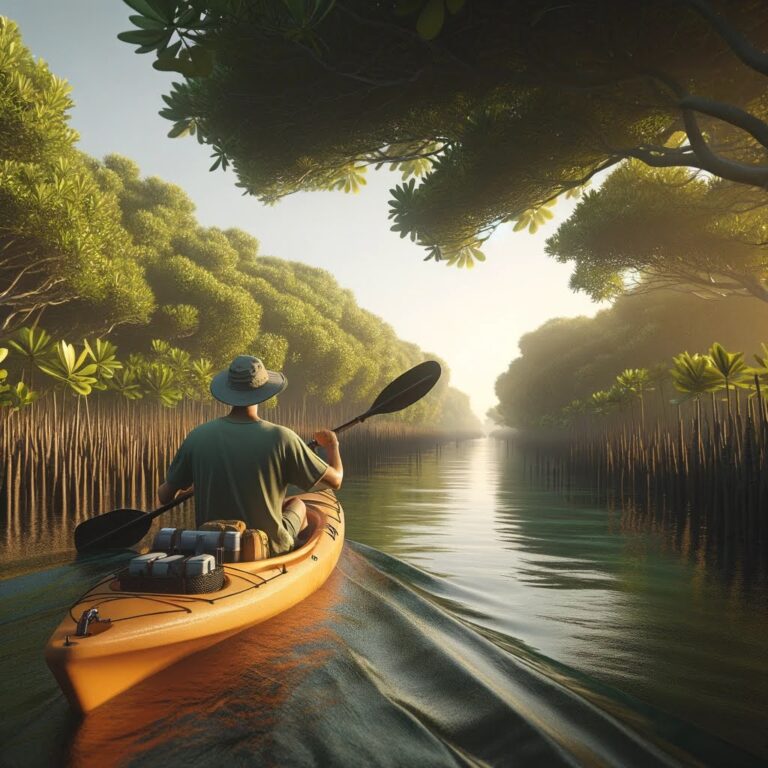The Thrill of Black Grouper Fishing in the Gulf of Mexico
The Gulf of Mexico is a vast and rich fishing ground, offering a wide array of opportunities for anglers.
Among the most coveted catches in these waters is black grouper, renowned for its formidable size and the challenging pursuit it presents.
In this guide, we will delve into the specifics of black grouper fishing, discussing the effective methods, rigs, and baits that will enhance your chances of successfully catching these remarkable fish.
Understanding Black Grouper

(image source: Wikipedia)
These fish are powerhouses, capable of growing up to five feet long and weighing over 100 pounds.
They are typically found near rocky bottoms, ledges, and reefs in waters ranging from 60 to 250 feet deep.
Black grouper are known for their strength and tendency to retreat to the safety of their underwater lairs, making them a thrilling challenge for any angler.
The Best Time and Place
Timing is everything in fishing. For black grouper, the best months are from May through September when the waters are warm.
The Gulf is dotted with prime spots, including the Florida Middle Grounds, and the areas around wrecks and artificial reefs off the coast of Tampa and Clearwater.
These locations offer the rocky structures that black grouper love, providing ample opportunities for a successful catch.
Essential Gear for Black Grouper Fishing
To tackle black grouper, you need the right gear.
Here’s what you’ll need to get started:
Rods and Reels
Heavy-duty conventional rods are a must.
Look for rods with a strong backbone and a sensitive tip to detect bites.
Paired with these rods, you’ll want high-capacity conventional reels loaded with 80 to 100-pound braided line.
This combination provides the strength and sensitivity needed to handle the power of a black grouper.
Terminal Tackle
Strong terminal tackle is non-negotiable.
Use 8/0 to 10/0 circle hooks, which are effective in ensuring a good hook set while minimizing harm to the fish.
Your leader should be made of 100 to 150-pound fluorocarbon, as this will withstand the abrasive structures and the grouper’s powerful jaws.
Weights and Sinkers
Depending on the current and depth, you’ll need weights ranging from 8 to 16 ounces. Egg sinkers and bank sinkers are popular choices. These will help keep your bait near the bottom where the grouper lurk.
Rigs for Black Grouper Fishing
Several rigs are effective for black grouper fishing.
Here are a few setups:
The Knocker Rig
This simple yet effective rig consists of a sliding egg sinker directly above the hook.
The sinker “knocks” against the hook, hence the name.
This rig is excellent for fishing near rocky bottoms as it allows the bait to stay close to the structure.
The Fish Finder Rig
Also known as the Carolina rig, this setup features a sliding sinker above a swivel, followed by a leader and a hook.
The fish finder rig is versatile and allows for natural bait presentation, making it easier to detect bites.
The Dropper Loop Rig
This rig involves creating a loop in the main line where a hook is attached. A sinker is tied at the end of the line.
The dropper loop rig keeps the bait off the bottom, making it less likely to get snagged in rocky areas.
Best Baits for Black Grouper
Choosing the right bait is crucial for attracting black grouper.
Here are some of the top choices:
Live Bait
Live bait is often the most effective for black grouper.
Pinfish, grunts, and blue runners are all excellent choices.
Hook the live bait through the nose or behind the dorsal fin to keep it lively and enticing.
Cut Bait
If live bait isn’t available, cut bait can be just as effective. Use chunks of bonito, mullet, or squid.
The scent of the cut bait will attract grouper from a distance.
Artificial Lures
While not as commonly used for grouper, large jigging lures and deep-diving plugs can also be effective.
Opt for heavy-duty jigs with strong hooks, and work them near the bottom to mimic the movement of prey.
Techniques for Catching Black Grouper
Now that you have your gear and bait ready, it’s time to get into the techniques that will increase your chances of landing a black grouper.
Anchoring and Chumming
One effective method is to anchor near a reef or wreck and start chumming the water.
Chumming involves releasing small pieces of bait into the water to attract fish.
Once the grouper are drawn to the area, drop your baited rig into the chum line and wait for a bite.
Drift Fishing
Drift fishing allows you to cover more ground.
Let the current carry your boat over productive areas while your baited rigs are deployed.
This technique is particularly effective in areas with strong currents where anchoring might be challenging.
Vertical Jigging
For those who prefer a more active approach, vertical jigging can be very effective.
Drop a heavy jig to the bottom and use a rapid lifting motion to attract the attention of nearby grouper.
This method can be physically demanding but highly rewarding.
Bottom Bouncing
This technique involves dropping your bait to the bottom and then lifting it slightly before letting it settle again.
The motion mimics the behavior of prey and can entice a grouper to strike.
Bottom bouncing is particularly effective when fishing in rocky areas where grouper are known to hide.

Hooking and Fighting Black Grouper
Once you feel a bite, it’s essential to set the hook quickly and firmly. Black grouper are notorious for their initial powerful runs, often retreating to the safety of their rocky hideouts. Here’s how to handle the fight:
Set the Hook
With circle hooks, you don’t need a vigorous hook set. Instead, apply steady pressure and let the fish set the hook as it moves away.
Once you feel the weight of the fish, start reeling in.
Keep Them Out of the Rocks
The moment you hook a grouper, apply as much pressure as possible to keep it from retreating into the rocks.
Use the rod’s backbone to lift the fish and reel steadily.
If the grouper manages to get into a crevice, give it some slack to coax it out before resuming the fight.
Steady Pressure
Throughout the fight, maintain steady pressure on the fish.
Black grouper are strong, and any lapse in pressure can allow them to escape.
Use your body weight to your advantage, leaning back and using the rod to absorb the fish’s powerful runs.
Landing Your Catch
After a challenging fight, landing a black grouper can be a rewarding experience.
Here’s how to do it safely:
Handling with Care
Use gloves when handling the fish to protect your hands from its rough skin and sharp gill plates.
Secure the grouper with a firm grip and avoid placing your fingers near its mouth, as grouper have strong jaws and sharp teeth.
Properly Securing Your Catch
Once landed, secure your catch in a cooler with ice to keep it fresh.
Black grouper are prized for their firm, white flesh, and proper handling ensures the best quality for the table.
Cooking and Enjoying Black Grouper
The reward of a successful fishing trip isn’t just the thrill of the catch but also the delicious meals that follow.
Black grouper is a versatile fish that can be prepared in various ways:
Grilling
Grouper fillets are perfect for grilling. Marinate with lemon, garlic, and herbs, then grill over medium heat until the flesh is opaque and flakes easily.
Frying
For a classic southern treat, coat grouper fillets in seasoned flour and cornmeal, then deep-fry until golden brown.
Serve with tartar sauce and lemon wedges.
Baking
Baking grouper with a crust of breadcrumbs, Parmesan cheese, and herbs is a simple yet delicious way to enjoy this fish.
Bake until the crust is golden and the fish is cooked through.
Conclusion
Fishing for black grouper in the Gulf of Mexico is an adventure marked by excitement, challenges, and many great rewards.
Equipped with the appropriate gear, bait, and techniques, you can engage in a serious battle with these powerful fish
Once those filets hit the plate you also get to enjoy the delicious spoils of winning that battle!
Prepare your equipment, set your course for the Gulf, and embark on a journey like no other.
Happy fishing!







